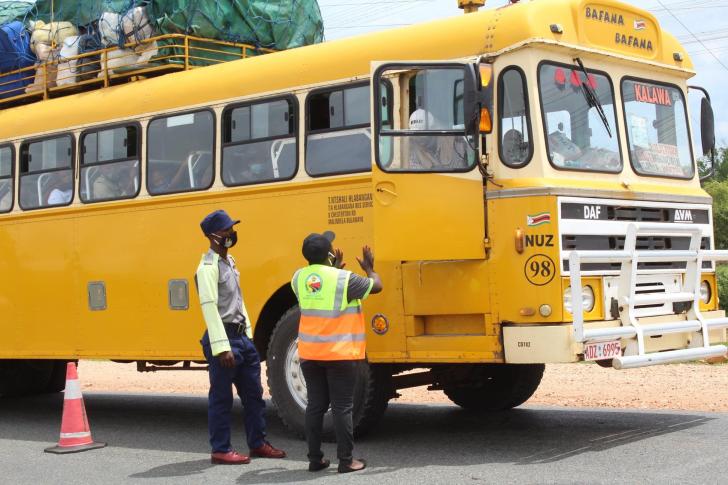News / National
Gwanda VID to tighten rules, regulations on passenger public service vehicles and heavy trucks
10 Jan 2024 at 05:59hrs |
1 Views

The Gwanda Provincial Vehicle Inspection Department (VID) is set to enforce Statutory Instrument (SI) 118 of 2023 in January, mandating compliance with speed-limiting and monitoring devices for passenger public service vehicles and heavy trucks.
According to a memo from the VID, all passenger public service vehicles and heavy trucks with a net mass of 4,600kgs and above are required to adhere to the provisions of SI 118 of 2023. The directive comes into effect on January 1, 2024, when these vehicles are presented for a certificate of fitness at VID Depots.
The memo stipulates that a compliance certificate from an approved installer must be presented and retained at the depot. The certificate should include the approved installer's name, proof of validity, certificate number, vehicle particulars (registration number, body type, make, model, chassis, engine numbers), and details of installed gadgets (serial number, manufacturer). Additionally, the certificate should specify the maximum limited speed, date of calibration and installation, and include a detachable sticker displaying the stated details on the vehicle.
The speed limit guidelines set out in the memo indicate that heavy vehicle trucks should not exceed 80 km/hr, while omnibuses should not exceed 100 km/hr. Vehicles with inbuilt speed limiters or governors by the manufacturer must have a speed monitoring device that records and stores data for at least six months.
The memo provides a list of companies whose speed-limiting devices have been tested and approved by the Standard Association of Zimbabwe. These include Butrack Security (Pvt) Ltd, Jendie Automobiles (Pvt) Ltd, Kensrin Company (Pvt) Ltd, Systech Africa, Latrom Systems ICT Services, Fanset International, MapMeOut, Fleetrack, Sator Rwanda Ltd, Track-it, and others.
Despite the government's efforts to enhance public safety on the country's roads through various laws, the implementation of these regulations has faced challenges. Police reports highlight that many road traffic accidents result from human error and speeding. Regular operations are conducted to identify and remove unroadworthy vehicles from the roads.
According to a memo from the VID, all passenger public service vehicles and heavy trucks with a net mass of 4,600kgs and above are required to adhere to the provisions of SI 118 of 2023. The directive comes into effect on January 1, 2024, when these vehicles are presented for a certificate of fitness at VID Depots.
The memo stipulates that a compliance certificate from an approved installer must be presented and retained at the depot. The certificate should include the approved installer's name, proof of validity, certificate number, vehicle particulars (registration number, body type, make, model, chassis, engine numbers), and details of installed gadgets (serial number, manufacturer). Additionally, the certificate should specify the maximum limited speed, date of calibration and installation, and include a detachable sticker displaying the stated details on the vehicle.
The speed limit guidelines set out in the memo indicate that heavy vehicle trucks should not exceed 80 km/hr, while omnibuses should not exceed 100 km/hr. Vehicles with inbuilt speed limiters or governors by the manufacturer must have a speed monitoring device that records and stores data for at least six months.
The memo provides a list of companies whose speed-limiting devices have been tested and approved by the Standard Association of Zimbabwe. These include Butrack Security (Pvt) Ltd, Jendie Automobiles (Pvt) Ltd, Kensrin Company (Pvt) Ltd, Systech Africa, Latrom Systems ICT Services, Fanset International, MapMeOut, Fleetrack, Sator Rwanda Ltd, Track-it, and others.
Despite the government's efforts to enhance public safety on the country's roads through various laws, the implementation of these regulations has faced challenges. Police reports highlight that many road traffic accidents result from human error and speeding. Regular operations are conducted to identify and remove unroadworthy vehicles from the roads.
Source - newzimbabwe
Join the discussion
Loading comments…
















